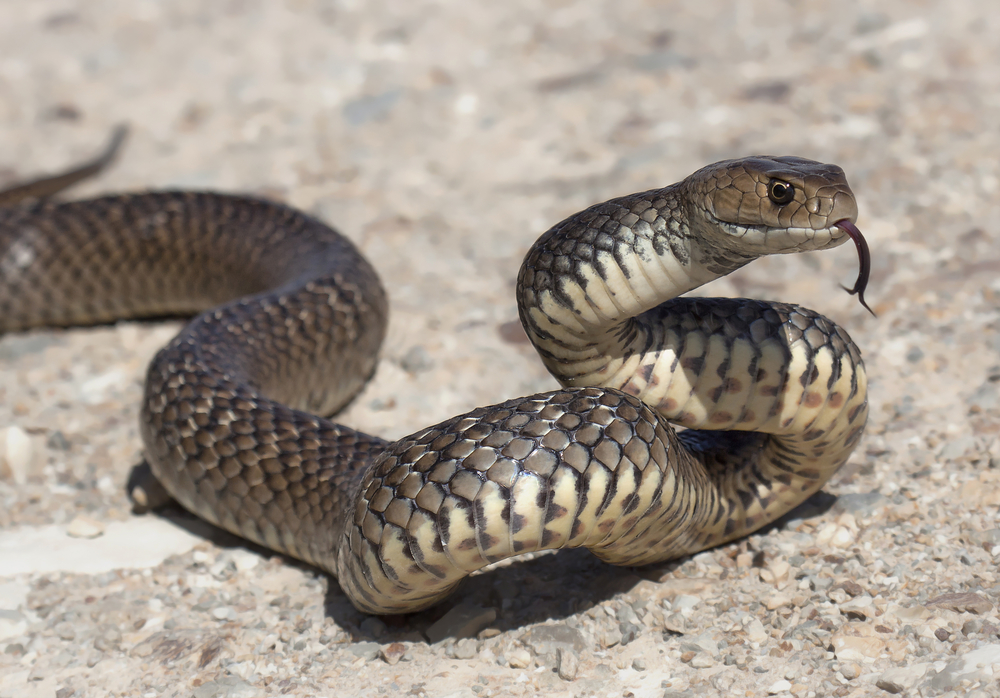Towards the end of last year, School Governance reported on proceedings brought over the death of a student on a school excursion from a brown snake bite and provided guidance on preventative measures that could be taken at school and whilst on excursions.
While the start of 2017 is not the height of ‘snake season’ (being spring, when the animals are being drawn out to mate), they are by no means absent during other times of the year, particularly when temperatures are high.
The recent death of a man in a Queensland beach suburb, just 50 metres from school grounds, serves as a grim reminder that the risk of snake bites is an ever-present one for schools.
The facts
Mr P, a 77 year old man, died after being bitten by a coastal taipan in his home on 20 December.
Mr P reportedly encountered the snake in his lounge or bedroom and may have attempted to remove it using a pair of kitchen tongs. The snake managed to bite him twice on his foot and paramedics suggested it may have actually hit a vein rather than just tissue. Despite being rushed to Cairns Base Hospital in a critical condition, Mr P died nearly a week later.
Mr P’s house sits about 50 metres away from Yorkeys Knob State School, which borders on coastal scrub.
One of Mr P’s neighbours reported that, before the incident, she had asked the school’s principal to remove overgrown vegetation at the back of the school, in order to reduce the risk of snakes being attracted to the surrounding residential area.
While a representative of the Yorkeys Knob Residents Association said it was very unusual for a taipan to be found in the area, a qualified Cairns snake catcher stated that previous encounters with taipans in the suburb and its surrounds demonstrates that there is a population of the animals in the area.
A spokesperson for the Department of Education and Training said that a snake catcher had visited the school site, and provided clearance of the school grounds, ruling out the possibility of a current risk at the school.
A duty of care reminder
Advice can be provided on how to reduce the chance of snakes coming onto private property and authorities can take steps to reduce the likelihood of people coming into contact with snakes on public land. However, it is impossible to remove all of the risks of snake bites.
Schools who are confused about their duty of care obligations, particularly in relation to unexpected incidents like this, should remember that they are expected to take reasonable steps to avoid students under their care suffering harm from foreseeable risks.
The culprit here, the coastal taipan, is the 6th most venomous snake in the world. While some may initially expect a snake encounter to involve a snake more common in urban areas (and more venomous), such as the eastern brown snake, it does not follow that a bite of this kind is not a foreseeable risk. Around 3000 snake bites are recorded annually in Australia and it would be reasonable to expect that proximity to vegetation would be a contributing factor in increasing the risk of a bite occurring.
The risk of snakes on school grounds
There has not yet been a snake bite recorded on school grounds this year. However, a further incident in a Queensland residence (by a carpet python), an unidentified snake encounter in Blue Mountains bushland and an unexpected bite by a green tree snake to an Australia Zoo visitor should serve as a reminder of the perpetual hazard posed by these reptiles when an encounter goes awry.
A school in a rural area, bordering on vegetation, or otherwise located in or near a snake habitat is clearly at risk of a snake encounter occurring.
There are many snake species around the country and it can be difficult to discern simply by quick glance at the animal whether it poses a serious risk. Further information on snake identification may be found here.
The safest approach is to always treat a snake encounter as a potentially dangerous event. A key aspect of this process would be to discourage attempting to remove a snake without advice and assistance from a snake handler or wildlife services. Further information can be found in our article Snakes and Schools: Part One – Student on excursion dies from snake bite: could it have been prevented?.
Avoiding a snake entering school grounds is a different matter and the best maintained school may still experience a snake encounter, particularly in times of wet and warm weather when snakes are more active. Like the school mentioned in this incident, anyone seeking to discourage snakes should implement regular vegetation maintenance and have clear waste management protocols. During high risk times or after a holiday break, schools should remind staff and students of the increased risk of snakes on or near the campus.
It has been stated that snakes can end up anywhere. However, a school with robust safety procedures, good communication strategies, effective waste management and a clean boundary will be taking reasonable steps to make itself better prepared for or reducing the possibility of a possible 'snake encounter'.


